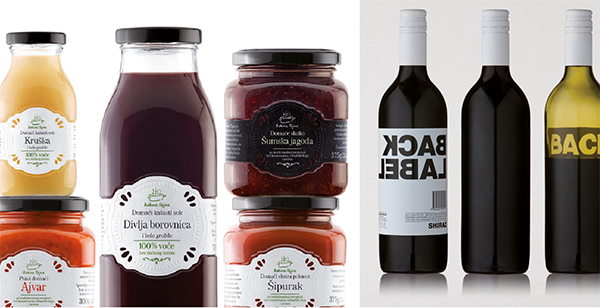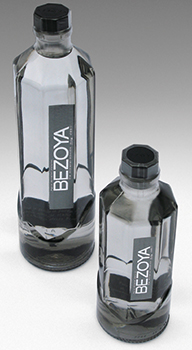Considerations on the glass packaging market
A historic packaging type that is still relevant and dynamically innovative. Glass packaging today is lighter but still resistant and 100% recyclable for countless times.
Over the years, glass packaging for food and non-food has managed to reinvent itself, both through advanced customization and through significant reductions to average weights (without for this reason weakening end performance).
At the beginning of 2000, the offer of custom bottles and jars represented approximately 40% of the total, but now the ratio has been inverted: between 6 and 7 in 10 bottles are now produced ad hoc by customer request, showing how packaging is still considered a tool for marketing and communication. This result was made possible by advances made in production processes.

The global market
The offer of glass containers is highly varied, both in terms of formats and of areas of use.
The “classic” classification includes bottles, jars, flacons and glass tube packaging or vials and small flacons.
In 2014 the glass packaging sector had 1% production growth in terms of quantity.
The increase was determined by an increase in domestic demand (+3.3%) which was partly covered by imports, estimated at +17.6%.
Exports, on the other hand, shrank slightly by 0.5%.
Bottles represent 88.6% of the total, and jars 6.7%, followed by hollow glass (4%) and tube glass (0.7%).
Sector uses
Bottles and jars are mainly used for food liquids and preserves.
Flacons (small jars, bottles and flacons) are used in pharmaceuticals and cosmetics/perfumes, while pharma uses tube glass packaging.
Bottles
The new hollow glass bottles put on the market are widespread in various food liquid product type sectors.
Alcoholic beverages account for 66.5% of bottles and, in this area, wine has the largest share (48%). This in particular is where the glass bottle is challenged by alternative solutions like the brick and bag-in-box. In the beer sector, competitor packaging consists in cans and kegs.
In spirits and vermouth, on the other hand, glass is “king”.
Glass bottles are also widespread among non-alcoholic beverages (16.9%), and the main sector of use in this area is mineral water (10%), where glass must compete with other packaging types, but especially PET bottles.
The small single-dose bottle prevails in packaging fruit juices, although glass is tending to lose ground in the face of competition from polylaminate cellulosic containers, but especially from PET bottles, which is gaining shares at the expense of both other types.
Another important area of use is olive oil, with a 5.7% share. In this area, the glass bottle predominates in the domestic market, but for exports it is challenged by tin plate containers and PET bottles.
Vinegar, tomato sauce, syrups, etc. are other outlet sectors for glass bottles, with a 10.8% share.

Jars
Approximately 32% of glass jars are used to package vegetable preserves, including ready sauces, preserves in oil and pickled products.
24.5% of jars are used in the important sector of baby food, while 8.5% is used for fish products (where glass tends to gain market shares), and 3.5% is accounted for by chocolate spreads.
The remaining 31.5% is accounted for by a wide array of different food products (olives, spices, jams, etc.)
In the sectors where glass jars are used, the main competitor is the tin plate or aluminium can, even though polylaminate board and flexible polylaminate bags have made some progress recently. The latter are set to become the two most formidable competitors of the glass jar.
 Flacons and hollow glass
Flacons and hollow glass
The two main outlet areas for flacons are cosmetics/perfumes and pharmaceuticals, which account for 83% and 15%, respectively. The remaining 2% is destined for other sectors.
As for tube glass for packaging, the main outlet area is pharmaceuticals, with more than 80% share.
Plinio Iascone
Istituto Italiano Imballaggio




















